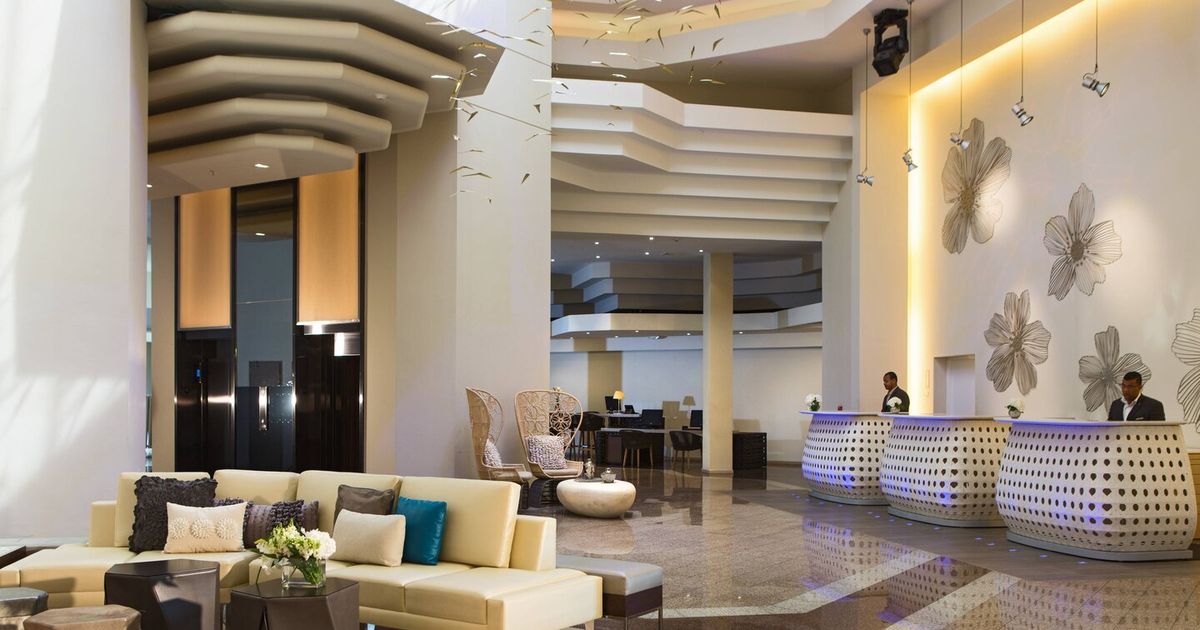SANTO DOMINGO.- Visiting the Dominican capital is essential for anyone who wants to soak up history, culture and, above all, the joy of its inhabitants.
Santo Domingo, the oldest city in the Caribbean, exudes a mix of the charm of another era and a modern Latin style, which has so much to offer the traveler.
The Colonial Zone, bordered by the Ozama River, was named a world heritage site by UNESCO in 1990. This area houses palace houses and majestic churches that reflect the architecture of the Late Middle Ages.
The oldest Catholic building in the Americas houses the Dominican church and convent. It was in Santo Domingo where the first cathedral (Santa María La Menor) and the first castle in the Americas (Alcázar de Colón) were built, which served as the home of the viceroy Don Diego Colón, one of the sons of Christopher Columbus.
Right in the heart of the city, steps from the boardwalk, the emblematic Renaissance Santo Domingo Jaragua stands out Hotel & Casino, with 80 years of history and which has inspired the pen of singer-songwriter Juan Luis Guerra.
The hotel, which has been part of the Marriott International family for years, is a meeting point for locals and foreigners in search of a welcoming atmosphere, whether to enjoy the restaurant's gastronomic offering or the cocktails in the pool area. . Every Tuesday they celebrate Mexican culture with tacos and rancheras, with the purpose of surprising guests with a varied program
“The Jaragua is an iconic hotel, which has a lot of history. Most people in the city know him, they also know him from our theater and parties, and they come to our social activities. The Renaissance brand invites you to get to know Santo Domingo, to explore everything there is to do in the city, in the Colonial Zone, the history, the culture and everything else. So it is a brand that represents that,” said Brock Hochhalter, area general manager for the Dominican Republic and Haiti.
“One of the greatest benefits of belonging to Marriott International is the recognition we have through Marriott Bonvoy, a guest loyalty and reward program that is the largest in the world,” added the American native of Montana, who grew up in Ecuador and arrived in Santo Domingo for the first time in 1998 with the mission of helping to recover the hotel after the impact of a hurricane.
Hochhalter fell in love with the country and his wife, they lived in Cancun for about seven years and then in Florida. But before he passed through Washington and Mexico City. Two years ago he returned to Santo Domingo, because he has seen substantial growth in the hotel sector.
“With all those renowned brands that came to the Dominican Republic, I said that is where the growth is, the opportunity. And since my wife is Dominican, we returned to the country. I love being located in this hotel directing what is coming for the entire country. So I have always wanted to be here in the Caribbean, here in the Dominican Republic,” said the executive, who projected that an expansion will come.
“We are going to open 12 hotels in the next two or three years. We are going to double the number of hotels we have in the Dominican Republic. So it is a great challenge, because it is rapid growth, but very welcome, because we are offering more of what they are looking for, not so much tourists, but also those who come to do business or to enjoy the city or the beach. So we will have a broader offer throughout the country for those people,” he said.
On the other hand, one of the purposes is sustainability. Therefore, they have created recycling programs for altruistic purposes. One of them consists of working with a company to reuse soaps and deliver them to low-income families, he said.
Gastronomic offer
The ecological theme is also transferred to the table. According to the hotel's executive chef, Luis Ortiz, he prefers to prepare the menu with ingredients that he finds in the property's garden or with local products.
“Our gastronomic offer is closely related to local products. We use responsible fishing, we serve endemic fish such as chillo or sea bream. Here we have a garden where we always try to get products seasonally. Sometimes we have Cherry tomatoes or chili peppers from here. And those products are what we give our guests to try. We also have cage-free eggs. And with that we contribute to sustainability in the hotel,” said Ortiz.
“Our restaurant is mostly focused on Dominican flavors, we have typical dishes with gastronomic elevation. We take two important points into account when creating the menu: heritage and influences. We focus on the aborigines who inhabited the island, who are the Taínos. We also have a bit of focus on when it was discovered, on the techniques and products that the Europeans contributed.”
One of the dishes he recommends to Jaragua's diners is local fishing ceviche marinated with tiger's milk and mixed with crunchy yautía, a typical root.
Another of his favorite dishes is short rib, a succulent cut of meat that requires laborious preparation.
“It is a meat that should be marinated for a day. Then it takes a few hours smoking. And in the end it takes cooking for almost two days in a vacuum at a low temperature. Basically it is a meat that can be cut with a spoon. We spent about four days preparing that dish, we also accompanied it with a creamy corn, with a little truffles and some pickled vegetables. For me, this is the one you can't stop trying,” explained the Colombian chef, who was born in Cali and grew up in Bogotá, where he began his culinary career.
Before arriving at the Jaragua kitchen in December, he was in Medellín and Panama.

